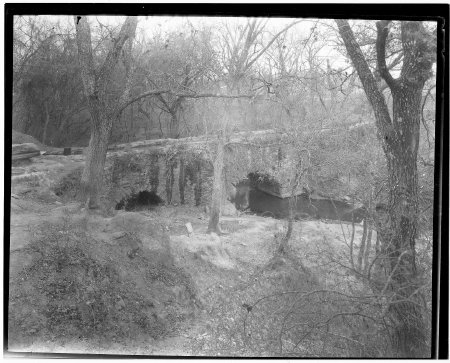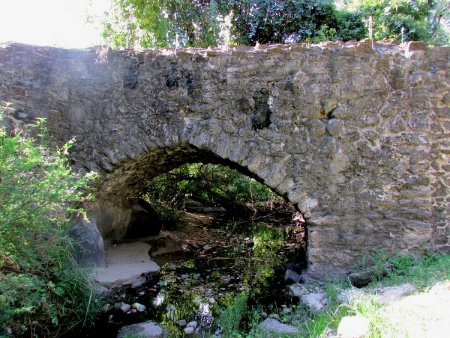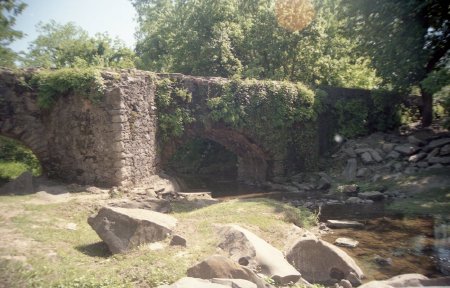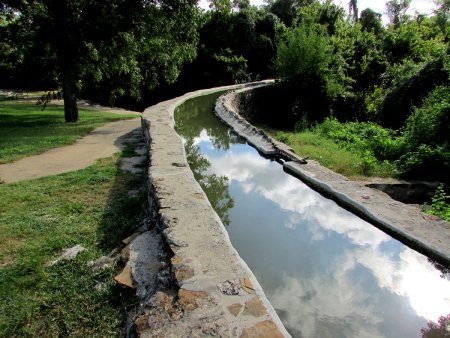Espada Aqueduct & Acequia
History:
Franciscan missionaries from Mission Espada built the aqueduct between 1731 and 1745. This stone structure, supported by two limestone arches, carried the waters of the Espada acequia in a raised channel across Piedras Creek, providing irrigation to surrounding farmlands.
The United States Department of the Interior designated the aqueduct a National Historic Landmark on October 15, 1966. In September 1978, the San Antonio Conservation Society deeded a 1.58-acre strip of land along the north boundary of the property to the San Antonio River Authority to facilitate the construction of the flood control bypass of Piedras Creek to protect the aqueduct from periodic floods.
The Conservation Society transferred its ownership of the aqueduct property to the National Park Service for inclusion in the San Antonio Missions National Historical Park on February 20, 1983. The aqueduct is the only structure of its kind remaining in the United States.
The United States Department of the Interior designated the aqueduct a National Historic Landmark on October 15, 1966. In September 1978, the San Antonio Conservation Society deeded a 1.58-acre strip of land along the north boundary of the property to the San Antonio River Authority to facilitate the construction of the flood control bypass of Piedras Creek to protect the aqueduct from periodic floods.
The Conservation Society transferred its ownership of the aqueduct property to the National Park Service for inclusion in the San Antonio Missions National Historical Park on February 20, 1983. The aqueduct is the only structure of its kind remaining in the United States.
About this Image:
1) The Espada Aqueduct over Piedras Creek. The channel carrying the water of the acequia is supported by two limestone arches spanning the creek.
2) The aqueduct has been carrying water over Piedras Creek for more than 265 years. This photo shows the thickness of one of the supporting arches. Photo taken by Ron Bauml.
3) Notice the diamond shaped central pier projecting from between the aqueduct's two arches. The shape of the pier reduces water pressure. Photo taken by Ron Bauml.
4) Looking into Espada's acequia channel as it curves to cross Piedras Creek via the aqueduct. The channel is four feet wide and four feet deep, with retaining walls one-and-a-half feet thick. Photo taken by Ron Bauml.
2) The aqueduct has been carrying water over Piedras Creek for more than 265 years. This photo shows the thickness of one of the supporting arches. Photo taken by Ron Bauml.
3) Notice the diamond shaped central pier projecting from between the aqueduct's two arches. The shape of the pier reduces water pressure. Photo taken by Ron Bauml.
4) Looking into Espada's acequia channel as it curves to cross Piedras Creek via the aqueduct. The channel is four feet wide and four feet deep, with retaining walls one-and-a-half feet thick. Photo taken by Ron Bauml.
To Learn More:
Credit:
Courtesy of the San Antonio Conservation Society Foundation.




